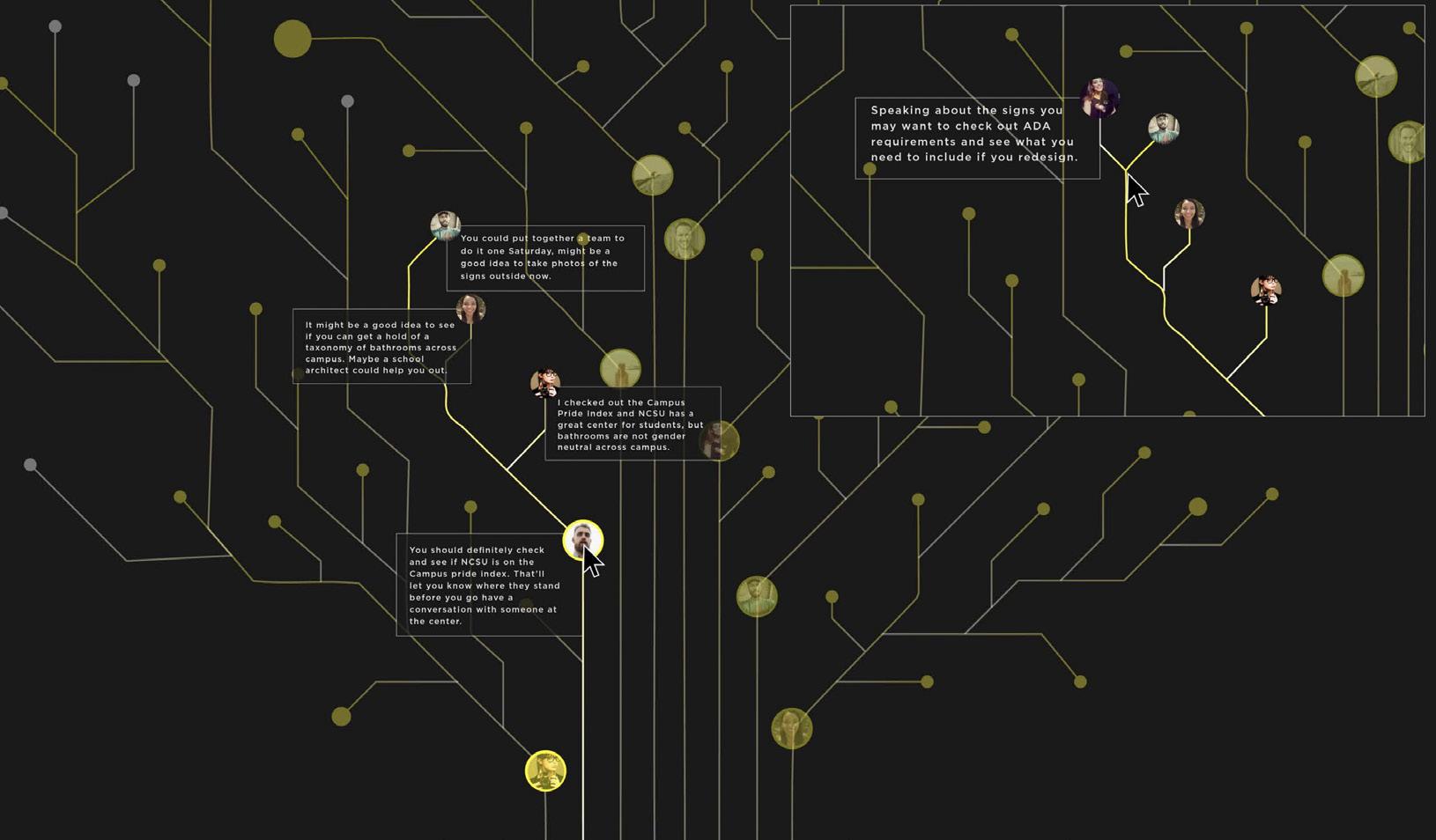
1 minute read
Bridging The Gaps
How can the design of an augmented reality de-escalation application for uniformed police officers used inside police-community programs encourage a change of learned behavior to avoid escalation for future interactions with African-American teenagers?

Nigel Jones MGXD 2021
4.2.8. - 4.2.10. are visual scenarios show how the tool would be set the police-community program with scenarios are placed throughout studies two, and three.
The tension between African-American teenagers and uniformed police officers remains an issue. Although there have been efforts to change police-community relations through police-community programs and training, many training tactics fail to take advantage of de-escalation training. While police training may utilize design technologies, such as virtual reality, no training utilizes place-based augmented reality. This study explores how an augmented reality de-escalation application for the uniformed police officer, used inside police-community programs, can encourage police officers to consider alternative ways to go about future interactions in the community. Police officers utilizing this application would learn ways to reduce the use-of-force, to have empathy, and to use appropriate language. This application can help with future interactions between the uniformed police officer and African-American teenager.
Figure 4.2.8.

Visual scenarios that show how the augmented reality tool would be set up in the policecommunity program with the uniformed police officer. These scenarios were utilized throughout the project studies.










